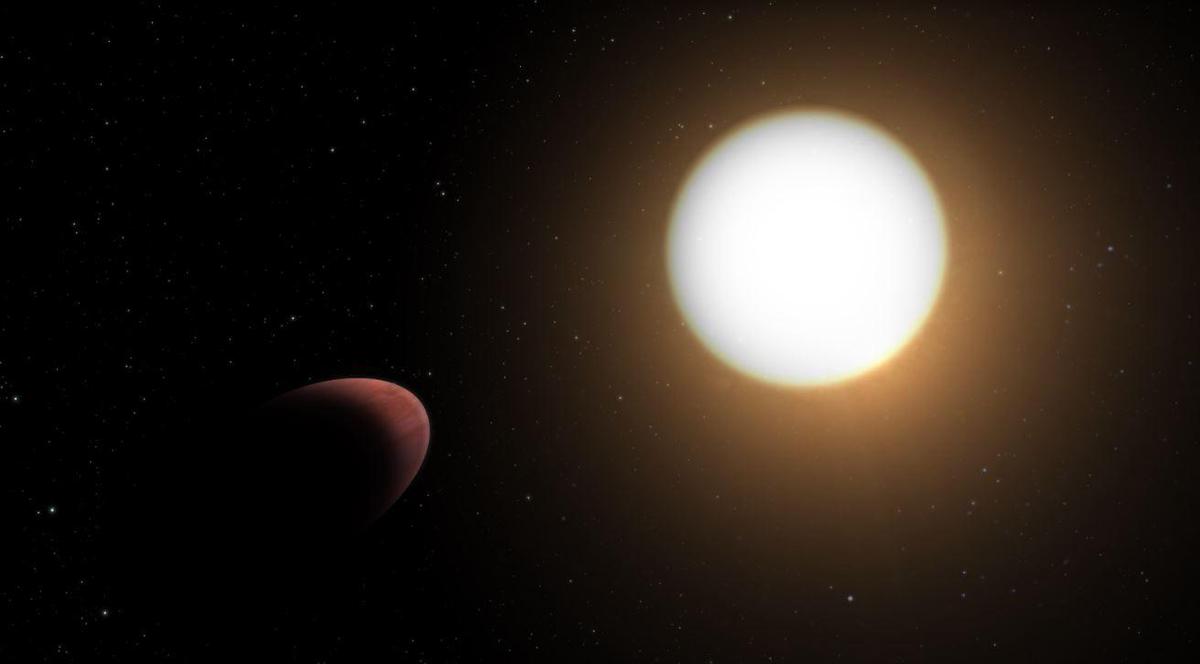
Space – exoplanet distorted into a rugby ball by tides
published
Researchers from the Universities of Bern and Geneva have discovered the deformation of an exoplanet for the first time. That’s thanks to the CHEOPS Space Telescope.

Planet WASP-103b, in the constellation Hercules, is distorted by the strong tides exerted by its star.
UNIGE
An international team consisting of researchers from the Universities of Bern and Geneva, as well as from the National Research Center PlanetS, has been able to detect the deformation of an exoplanet for the first time. This discovery was made thanks to the CHEOPS Space Telescope, Launched in December 2019, in a joint mission between the European Space Agency (ESA) and Switzerland, led by the two Swiss universities, announces the University of Geneva in communication Mardi.
strong tides
Scientists were able to closely observe the planet WASP-103b, located in the constellation Hercules. It is twice the size of Jupiter, which is already the largest planet in our solar system. It is also 50 times closer to its star than Earth is to the Sun.
As with the Earth with the Moon, WASP-103b is subject to tides. But these things are extreme because of the proximity of an exoplanet to its star. UNIGE states that the planet only takes one day to orbit around it. For once, it is subjected to tidal forces so intense that it deforms until it takes the shape of a rugby ball.
The Hubble and Spitzer Space Telescopes have spotted exoplanets in the past. However, it was the high resolution of CHEOPS that enabled the scientists to measure the small signal from tidal deformation of WASP-103b, more than 2,800 light-years away.
tidal impacts on rocks
“It is amazing that we were able to do this; this is the first time that such an analysis has been possible,” according to Babatunde Akinsanmi, a researcher in the Department of Astronomy at UNIGE’s School of Science and co-author of the study.
What is this discovery that has just been published in the journal Astronomy and Astrophysics?And Will it be useful? It will not only allow us to learn more about the shape of the planet but also about its composition. “On Earth, we can only see ocean tides. The rocky part doesn’t move much. By measuring how deformed the planet is, we can determine what proportion is made of rock, gas or water,” says Babatunde Akinsanmi.
Future observations with CHEOPS and the recently launched James Webb Space Telescope will still be needed to decipher the details of the deformation and internal structure of WASP-103b and similar exoplanets.
(cht / com)

“Organizer. Social media geek. General communicator. Bacon scholar. Proud pop culture trailblazer.”
